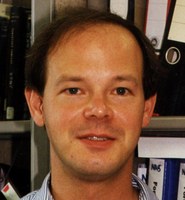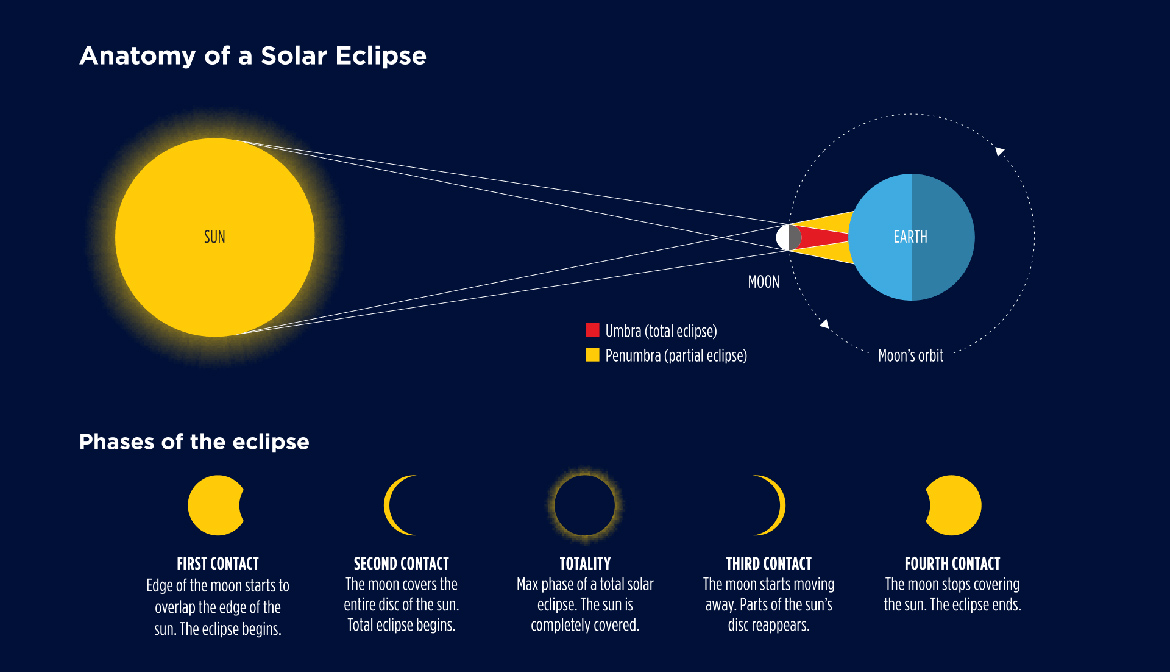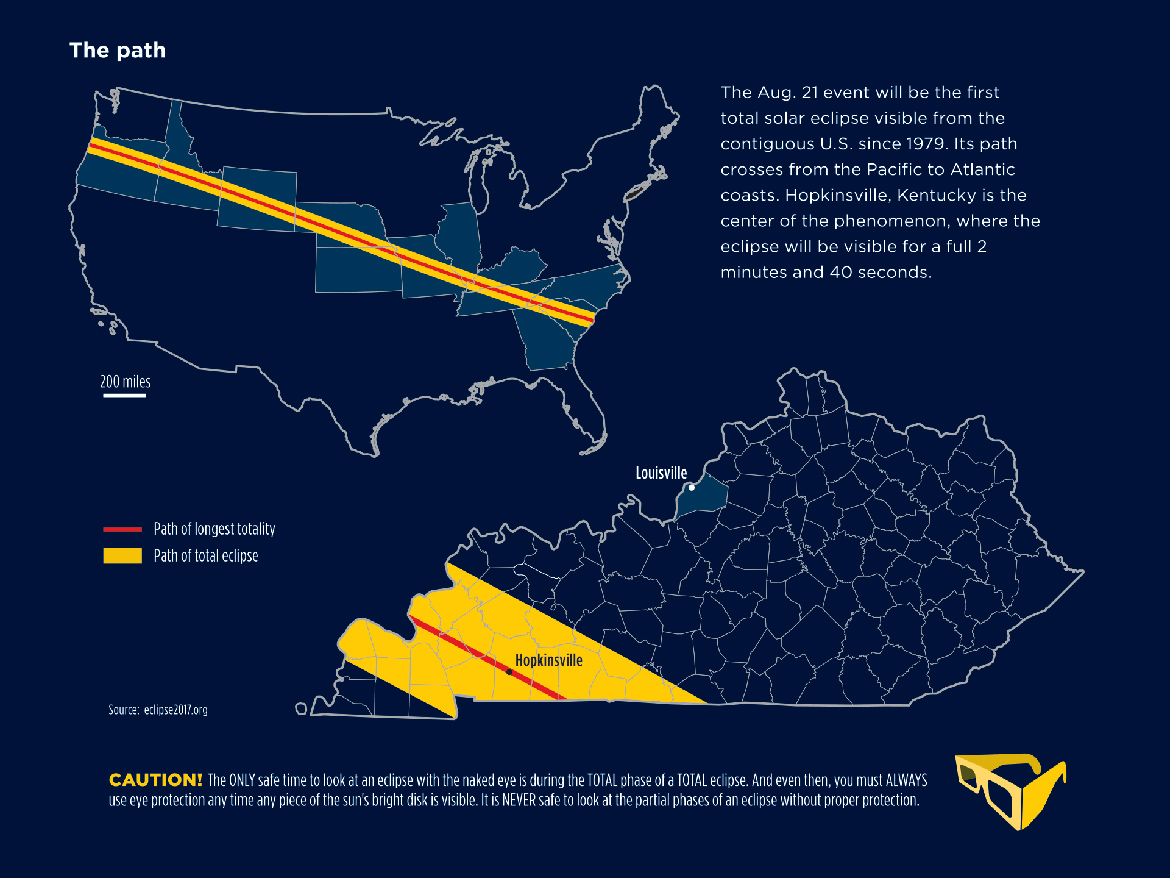The Greatest Two Minutes in Astronomy
By Judy Hughes
Adapting the Kentucky Derby’s nickname is a fitting description for Kentucky’s grandstand location for a world-class event: a prime seat at the finish line for the totality of the Aug. 21 solar eclipse. So it is no wonder that Gerard Williger, a University of Louisville physics and astronomy associate professor, riffs off the Kentucky Derby race sports reference in anticipation of the celestial event that will draw thousands of people to the state months later.
“We regard it as a golden opportunity falling from the sky,” said Williger, who joins his colleagues in seizing the chance to spread the excitement and knowledge about their field of study.
The physics and astronomy department primed an audience last fall when its annual Bullitt lecture in astronomy featured former NASA astrophysicist Fred Espenak, known as “Mr. Eclipse” for his many books and predictions on the phenomenon. Espenak, who has witnessed 26 total solar eclipses, talked about the upcoming one, which will be visible Aug. 21 from the contiguous United States for the first time since 1979.
The maximum viewpoint for the totality of the moon covering the sun will be near Hopkinsville in southwestern Kentucky starting around 1 p.m. CDT. The mid-afternoon effect will be “eerie twilight,” Espenak says, as stars appear, temperatures cool and birds and other animals act as though night has fallen.

Prof. Timothy Dowling is among the UofL professors helping to educate the
public about the total solar eclipse for which Kentucky is a prime vantage point.
“It’s pretty cool that Kentucky is the epicenter of it,” said Timothy Dowling, a professor who has seen two solar eclipses. In this state, where the moon will completely block the sun’s face for up to two minutes, 40 seconds, “it’s going to be one of the best ones ever.”
UofL students and faculty members are headed west to various spots in hopes of a clearer glimpse. The Society of Physics Students’ UofL chapter will set up at Mike Miller County Park near Benton. Williger said he and department colleague James Lauroesch intend to meet with UofL alumni chapters in western Kentucky or slightly below the state line in Nashville, Tennessee. Benne Holwerda, an associate professor who joined the department this year, is bound for Land Between the Lakes National Recreational Area, along with some Louisville Astronomical Society members and visitors. “I have friends coming who are probably going to be camping in my yard,” Holwerda said.
For those who cannot travel outside the city that day, Gheens Science Hall and Rauch Planetarium plans to open to the public 1:30-3:30 p.m. EDT with people who can talk about the phenomenon and a chance to watch a live feed in the domed theater, according to Paula McGuffey, planetarium program manager. A solar telescope will be available so viewers in Louisville will be able to experience a partial eclipse where 96 percent of the sun is covered.
The planetarium gift shop also will sell $3 eclipse-viewing glasses.
People need to know when and how to safely observe the eclipse, and NASA, astronomers and doctors will spend much time until then educating the public about how to avoid permanent eye damage from intense brightness. People should avoid looking directly at the sun unless using protective eyewear – and that doesn’t mean regular sunglasses will suffice. Dowling suggests welder’s goggles with grade 14 glass or higher. Other options include eclipse glasses that use special filters, or viewers can make a simple pinhole camera for a projected view of the sun.
“Do try to make this one, as you’ll have to travel or wait awhile” for the next one, Williger said. The next total eclipse visible in part of the United States will be in 2024, and the next coast-to-coast one will be in 2045.
Of course, rainy or overcast weather still could be a spoiler Aug. 21. “We live in Kentucky. There’s a 50-50 chance of having clouds,” he added.



